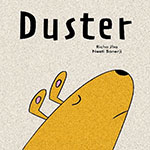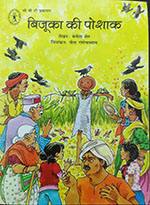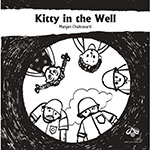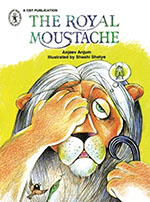Children
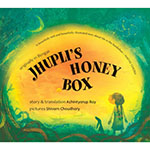
Story & translation by Achintyarup Ray.Translated from the original Bengali. Illustrations by Shivam Choudhary
2022
Jhupli belongs to the Sunderbans, and her father goes out into the forests every other day to collect honey from the forests. It is his occupation, necessary to feed his family and send his children to school, even Jhupli, a girl child. As depicted in a two-page illustration, when home, he breaks off a tiny bit from a honeycomb he had brought and gives it to Jhupli. For my father, who would have been 100 next year, it used to be roadside masala-muri, damp by his delay.
Shivaji’s Maratha Swarajya is in peril—with the Mughals closing in, his empty coffers mean that his loyal army hasn’t been paid in months. If Swarajya must be saved, there is only one way out and that is to somehow get a lot of money, and soon. So, Shivaji’s guptachars plot an audacious attack on the city of riches—Sura—where bania, Mughal, British and other traders all have amassed hoards of money, gems and other valuables.
Why had no one ever thought of writing a storybook about India’s freedom struggle from a child’s perspective, or why had I not come across one before this? These questions sprang to my mind as soon as I started reading The Chowpatty Cooking Club. The book is a story of how three children are fired up by the events taking place around them and jump in to do their bit in the fight for India’s freedom.
In most countries, philosophy as a subject of study is open to students only at the undergraduate level. However, in the last four decades or so, many have argued that there is a dire need to introduce philosophy to students at a much earlier stage, preferably from middle school years onward. According to the proponents of this view, introducing philosophy at this age enables students to critically engage with what they learn and experience, both in school and outside.
Better safe than sorry.’ A quote told to all in their childhood and one that stays relevant to this date. As the title suggests, the premise of the book revolves around this quote. Comprising 240 pages and ten sections, the book covers various topics from fire to the internet. A type of instructional book, it gives a guide to staying safe in daily life.
2021
The crux of the story is that the sun is up in the sky and why is Amma still sleeping?From one stand-point, this is a very small, simple story that tries to capture a very small slice of time-frame and space. But if you read it again after a while, some hazy images start emerging in your mind.
2021
Picture books, as a genre, are helpful in the early stages of reading. True to its genre, the book, I Love Grey, with its full page and sometimes double-spread illustrations and short sentences, gives ample space for imagination and reading practice. The text is simple, with some repetition—the phrase, ‘I love’—appears on each page, qualifying it further for a beginner’s reading book.
2021
Duster is about a dog who is not really a dog. Or is he a dog but no one believes so? Duster likes things that a cat likes and he dislikes things that a dog is supposed to like. His human is disappointed in him for not behaving like a dog.
In the first read, The Giggling Girl felt like a simple story with 6-year-old Gargi giggling through various happenings around her, through the seasons, through the year. Over a day or two, the story stayed and kept gnawing at me. I wondered if these giggles could or should be taken so innocently. I decided to take the story to a group of children who were in the age of 7 to 12 years old and see their response.
Every year, as I see the big black ants in my kitchen and garden, it is a signal that it is going to rain. I feel happy about the heralding monsoon. I enjoy watching them walking silently one behind the other gathering food or dragging a dead insect from one place to another. At the same time, I shudder at the thought of scores of them gathering on my kitchen platform.
The title of the book is interesting in the sense that it gives you a chance to guess who is Number 5. Is it an animal? A bird? The illustration of little children on the cover page and their expressions tell us that they are looking for something. The trees around them suggest that they are in a forest.
A bunch of children who are travelling to see a performance are the focus of the narrative in Pankaj Saikia’s The Theatre of Ghosts. It starts with two young girls leaving their house with their pet dog. The girls and their dog think they glimpse a ghost on their route and are scared by it. Later on, we discover that the ghost was only a little child wearing a mask.
2022
This picture book tells a village story about a kind, prosperous family that helps a farmer protect his harvest by making a scarecrow. Bhola, a farmer, approaches the grandfather of the family he sells his harvest to every year. He cries out for help to prevent the crows from eating the harvest. How can crows ruin the crop? From grandfather to grandson, every family member marches up to Bhola’s farm to investigate the matter.
The cover of this book invites you to look deep. It feels as if you are standing in a well and looking above at all the people standing there! The people—young and old—are all staring down at you with surprise.The story revolves around a cat, but along with the cat, humans play an important role in it.
2022
Let’s begin by saying that the idea of this book is a ‘found’ one and that the content highlights one of the most common experiences of childhood. Almost all of us have childhood memories of being lost in a mela: letting go of a parent’s hand and running after one or another compelling game or toy can cost a child dear.
Anjeev Anjum spins an endearing story about a copycat Lion, King of the Jungle, who wishes to assert his lordship over his subjects in the jungle just like the King of the land does over his subjects.
2022
Alien visit, suspense, adventure and some life lessons… a cracker of a book that will enthral any youngster!The names of the characters in this beautifully illustrated, colourful book are as catchy as the story. Ma-Cluck and K-Chick are visiting Earth from their Galaxy ‘Scrambled’.
Let us talk about what big books are. These are large picture-books designed to be shared with young readers by adults around them. By and large they are for pre-primary and primary aged children who are just beginning to enter the world of written texts.How do we use big books? The recommended format is to conduct ‘shared reading’ with children.
Thirteen years ago, a friend brought to my attention a series of reading cards published by Pratham. ‘You must have these in your school library,’ he had insisted and proceeded to procure them for us. I must admit that I was not greatly impressed with these cards, or I should say, the idea of reading cards. I am an avid reader of both fiction and non-fiction and wrinkled my nose at the cards as a substitute for books.
A richly illustrated children’s book written in simple, rhyming verses, A Rooster for a Pet is about a rambunctious rooster who turns the life of the author upside down. Bought by the author’s father, the cuddly ball of fluff soon grows to be a menace in the household, fluttering about the house, getting onto furniture and appliances,







